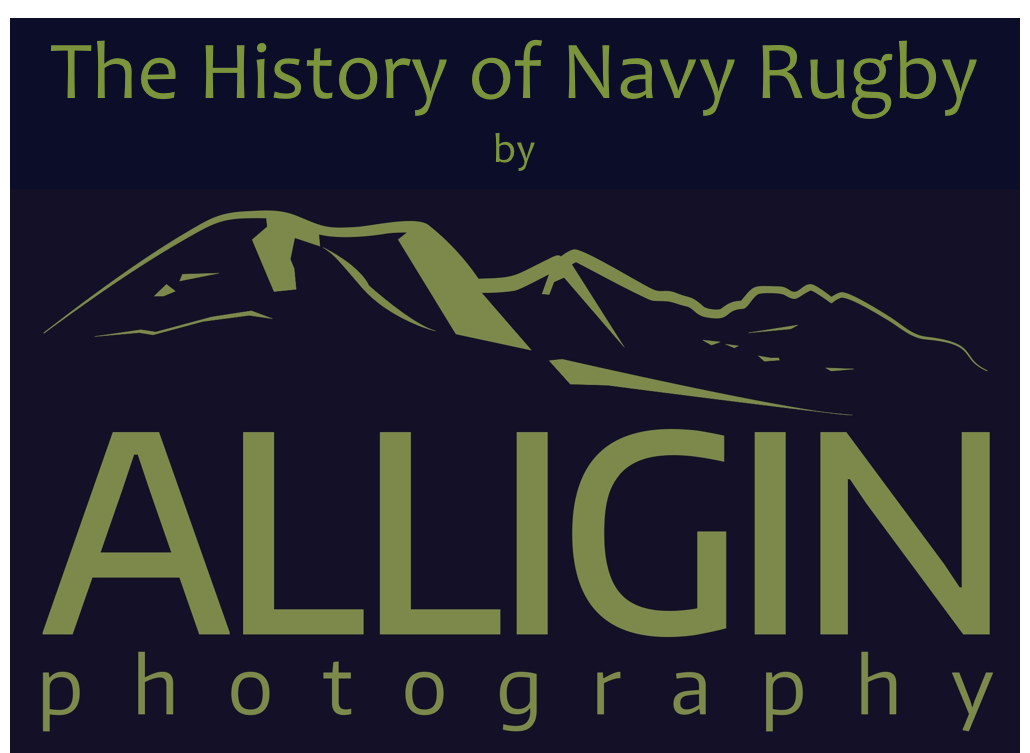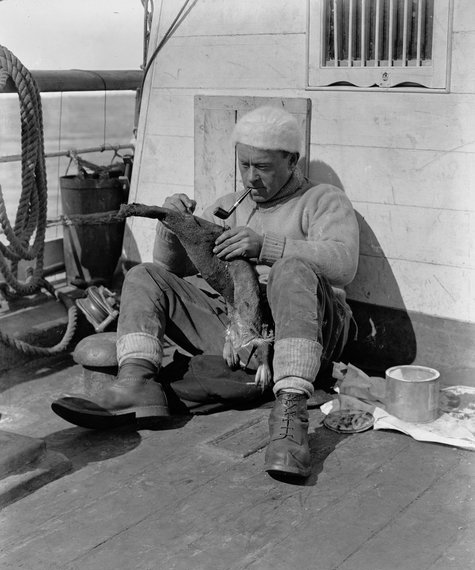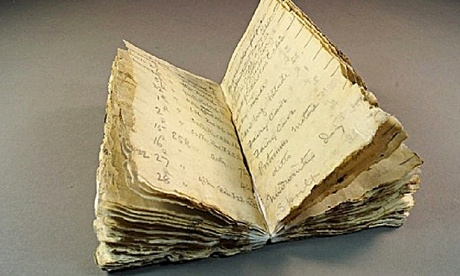Surg Lt George Murray Levick
“I am told that he has some knowledge of his profession but there it end. He seems quite incapable of learning anything fresh. Left alone, I verily believe he would do nothing from the sheer lack of initiative….I am afraid there is little to be expected of him.”
The quote above appeared in the Journal of the Royal Navy Medical Service in 1977 and is attributed to Captain Scott prior to the ill-fated Antarctic Expedition, from which he was not to return. And the man he was talking about? George Murray Levick – the first Secretary of the Royal Naval Rugby Union.
Scott’s quote is perhaps slightly surprising given what Levick had already achieved by the time he sailed on the Terra Nova in 1910. Whilst based in Chatham he had been one of the driving forces behind the formation of the Naval Rugby Union, became its first Honorary Secretary whilst also serving as Honorary Secretary to the first official Army Navy match played in February 1907. Perhaps his one claim of note was that he was a Touch Judge at that first game along with Royal Engineer, Major Macnab. (London Society provided the referee - Greg Haranett who was the honoray secretary of London Society of Rugby Referees at the time).
Throughout this time, he was still playing the game and was for some time the captain of the combined Army Navy side Chatham. Though, when stationed at Portsmouth, he was unable to force himself in to the powerful United Service side his name did appear playing for their A team from time to time.
Clearly with the Union up and running Levick felt he need a new challenge and having served with Scott on board HMS Essex he was chosen as one of three doctors to accompany the expedition. His time in the Antarctic is characterised by two key events. The first were his observations and classification of the Adélie penguin whilst the second was his survival through an Antarctic winter in a snow hole with five others.
I find it hard to imagine what it must have been like to live for six months in a snow hole that you were unable to stand up, in twenty four hour darkness of a southern Winter, surviving on seal and penguin meat / blubber as you had only been left with six weeks of rations. On more than one occasion they nearly succumbed to the effects of carbon monoxide poisoning whilst intestinal problems, urinary infections and diarrhoea were constant companions to the six as they tried to survive the Winter. Levick more than anyone has been reported as being the most resourceful of characters and it was his skills, perhaps more than anyone else’s that helped the group survive. That the group, malnourished, frostbitten and sick were able to cover the 230 mile hike out from their camp in September was probably partly due to the programme of Swedish exercise that Levick had insisted on within the confines of the snow hole.
Surg Lt George Murray Levick cont.
A detailled account of the expediction was written by Aspley Cherry-Gerrard, a fellow explorer on the trip. The book, 'The Worst Journey in the World', includes a fitting tribute to what the group endured and also quote from Levick which gives a glimpse on the man behind the name: "They ate blubber, cooked with blubber, had blubber lamps. Their clothes and gear were soaked with blubber, and the soot blackened them, their sleeping-bags, cookers, walls and roof, choked their throats and inflamed their eyes. Blubbery clothes are cold, and theirs were soon so torn as to afford little protection against the wind, and so stiff with blubber that they would stand up by themselves, in spite of frequent scrapings with knives and rubbings with penguin skins, and always there were underfoot the great granite boulders which made walking difficult even in daylight and calm weather. As Levick said, "the road to hell might be paved with good intentions, but it seemed probable that hell itself would be paved something after the style of Inexpressible Island."
Levick’s scientific work on the expedition was both seminal and fundamentally flawed. Having learnt photography on the trip South his detailed observations and recording of behaviour in one of the largest penguin rookery’s still informs science today. However, his ascribing of human style thought to some of the behaviours observed was scientifically wrong even though when viewed today may cause some amusement as to his approach. Levick described what he called depraved behaviour within the colony from the penguins that had not found a mate and were excluded to the periphery. Necrophilia, sodomy and paedophilia were all displayed (in his view) and as a consequence he wrote some of these notes in Greek so that only the ‘educated’ would be able to read them. He refused publication of some of the work and they may well have been lost to science but for their rediscovery in 2012 where upon his full work was published. This somewhat extreme Edwardian (class behaviour) had also been exhibited by Levick with regard to strongly held views on the ‘rugger field’ and probably contributed to the prohibition of Petty Officers and the those of the Lower Deck being considered capable of playing the game other than within the confines of their own ship under the direct supervision of their own officers.
On his return from the Antartic George Levick resumed his duties in the Royal Navy and served at Gallipoli. After the war he retired from the RN, married, and they started a new intiative which was an early forerunner of some of the urrent intiatives we see designed to help Service veterans. Levick's idea was to train blind, former personnel, to become physiotherapists. Not for the first time in his life he perservered through great opposition and his intiative saw benefits for both the patient and the blind people selected for physiotherapist training. As this work became established his drive saw him start a new project which was to open avenues for schoolboys to become young explorers. Forming the Public Schools Exploring Society and becoming its first President. This organisation became the British Exploring Society, now based at the Royal Geological Society, and still wit hthe aim of encouraging exploration by Britians youth.
Finally he returned to military Service, at the age of 64, after the outbreak of World War II. He worked as a consultant at the Commando Specialist Training Centre, north west of Fort William, near where today's Commando Memorial Stands. Levick advised on nutrition and survival techniques with much of his ideas and work being published in the seminal publication (although only a pamphlet) 'Hardening of COmmando Troops for Warfare'. During this time he was also a key adviser for Operation Tracer which was designed to provide the UL with intelligence gathering if the Germans or their Axis allies, ever captured Gibralter.
In admitting George Levick to the Heart of Oak Hall of Fame we can look at his achievements through two lens. The first, as a rugby player, is not one that would necessarily raise much discussion. A keen player who where ever he was stationed looked to play a game of rugby but in Royal Navy terms, with limited success. He becomes the first player to be admitted who did not hold a Navy and/or an International Cap and his inclusion opens the door for other distinguished achievements to be represented in the Hall of Fame.
The second lens you have to view Levick's life through is that of his accomplishments for the benefit of others. Many of these were summed up so well by Major Evans, of the British Explorering Society, after Levick's passing: "A truly great Englishman has passed from our midst, but the memory of his nobleness of character and our pride in his achievements cannot pass from us. Having been on Scott's last Antarctic Expedition, Murray Levick was later to resolve that exploring facilities for youth should be created under as rigorous conditions as could be made available. With his usual untiring energy and purposefulness he turned this concept into reality when he founded the Public Schools Exploring Society in 1932, later to become the British Schools Exploring Society, drawing schoolboys of between 16 and 18½ years to partake in annual expeditions abroad into wild and trackless country."
However this eulogy glossed over his pre Scott life where he was, along with Login, Lyon, Noble and Roberts, a driving force behind the formation of the Royal Navy RUgby Union in 1907 (not a misprint) and also that very first Army Navy Match, also in 1907. It is a testimony to the first bylaws that Levick helped frame, many still unchanged today, and his drive and determination that the Union not only became established but flourished and as a consequence his inclusion as a Heart of Oak is on merit and the person he was, a rugby player, explorer, scientist, administrator and a humanitarian.
Other Resources and Facts
- As far as I am awate George Levick is the only Secretary of the Royal Navy Rugby Union to have a mountain named after him. Mount Levick is a 2,390 m, standing at the NW side of Tourmaline Plateau in the Deep Freeze Range, Victoria Land.
- Click here for a free ebook "Antartic Penguins by Dr G Levick"
-
Dr. George Murray Levick (1876-1956): Unpublished notes on the sexual habits of the Adélie penguin
-
George Murray Levick - Wikipedia
Other Resources and Facts
George Levick was admitted to the Heart of Oak, Hall of Fame, September 2018
Page by Geraint Ashton Jones
(Amendments / additions gratefully recieved)



